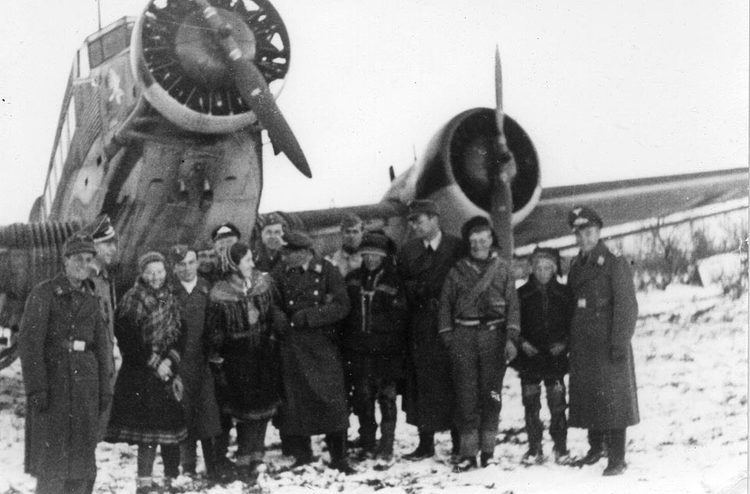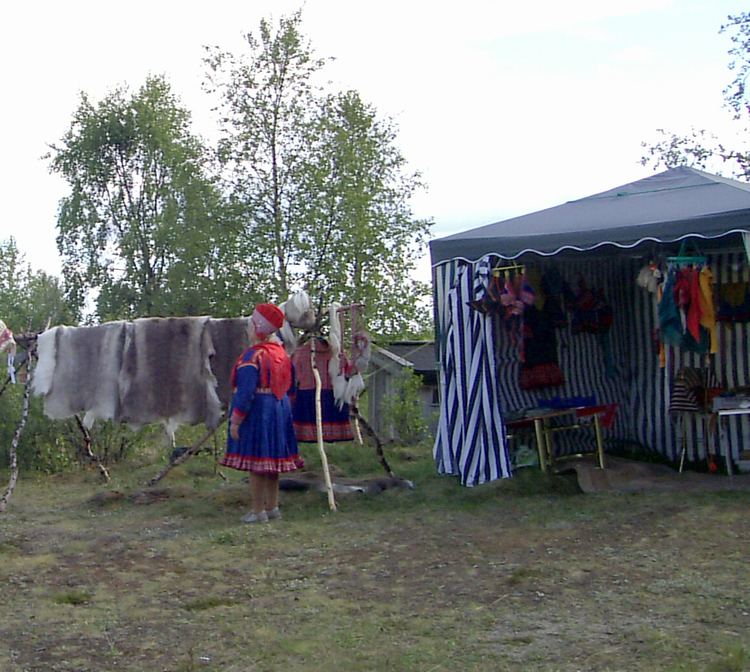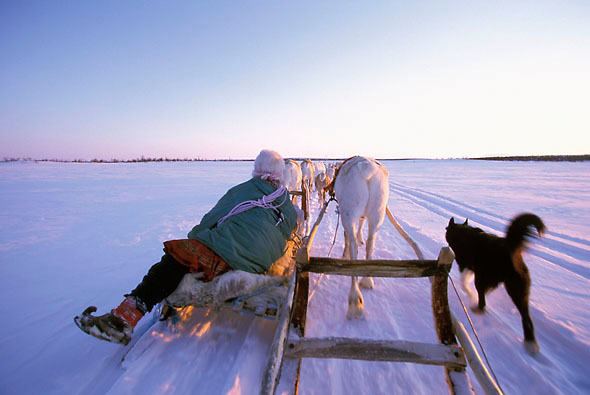Country Norway Mayor Klemet Erland Haetta (SaB) | Area 9,707.35 km2 | |
 | ||
University Sami University College Language spoken www.kautokeino.kommune.no | ||
Map of Kautokeino
Kautokeino (Norwegian) or Guovdageaidnu (Northern Sami) (also: Finnish: Koutokeino and Kven: Koutokeino) is a municipality in Finnmark county, Norway. The administrative centre of the municipality is the village of Guovdageaidnu/Kautokeino. Other villages include Láhpoluoppal and Máze.
Contents
- Map of Kautokeino
- Road trip kautokeino 2006
- The winner of kautokeino sami easter festival aka whiteman
- General information
- Name
- Coat of arms
- History
- Churches
- Government
- Municipal council
- Geography
- Climate
- Birdlife
- Transportation
- Population
- Villages
- Institutions and media
- Cultural events
- Notable residents
- Triva
- A day in the life foodies cafe timelapse
- References

The 9,707-square-kilometre (3,748 sq mi) municipality is the largest by area out of the 426 municipalities in Norway. Kautokeino is the 272nd most populous municipality in Norway with a population of 2,938. The municipality's population density is 0.3 inhabitants per square kilometre (0.78/sq mi) and its population has decreased by 0.9% over the last decade.

Guovdageaidnu-Kautokeino is one of two cultural centers of Northern Sápmi today (other being Kárášjohka-Karasjok). The most significant industries are reindeer herding, theatre/movie industry, and the public education system.

Road trip kautokeino 2006
The winner of kautokeino sami easter festival aka whiteman
General information
The municipality of Kautokeino was established in 1851 when the southern part of the old Kistrand municipality was separated to form this new municipality. Initially, there were 869 residents in the new municipality.
Name
The first element in Guovdageaidnu is guovda which means "middle" or "half" and the last element is geaidnu which means "road". Combined it means "half way", since the location is half way between two traditional migrating points. It is also the geographic centre of Northern Sápmi. Kautokeino is a Finnicized form of the Sámi name Guovdageaidnu, and it is also used by Norwegians.
The name of the municipality was KautoKeino until 1987 when it was changed to Guovdageaidnu-Kautokeino. It was the first municipality in Norway to get a Sami name. In 2005, the name was again changed, such that the either Guovdageaidnu or Kautokeino can be used.
Coat of arms
The Coat of arms of Kautokeino were granted on 4 September 1987. The arms show a gold-colored lavvu on a blue background. The lavvo is still in use by reindeer herders who follow their herds around according to season and availability of food for the animals, and so it was chosen as the symbol for the municipality.
History
In 1845 measurements were made for Struve Geodetic Arc at mountain tops Lodiken (Luvdiidcohkka) and Bealjasvarri.
In 1852, Kautokeino was the site of a Sami uprising against representatives of the Norwegian authorities. This was one of the few violent reactions by the Sami against the exploitation policies of the Norwegian government and was the only known confrontation between Samis and Norwegians with loss of human lives.
In August 2016 the third edition of Sapmi Pride, the LGBT pride festival, was moved to- and held in Kautokeino, to protest that the local church council refused to wed gays and lesbians in its church - and to protest that the chief priest of the socken said that homosexuality is something that people rid themselves of.
Churches
The Church of Norway has one parish (sokn) within the municipality of Kautokeino. It is part of the Indre Finnmark deanery in the Diocese of Nord-Hålogaland.
Government
All municipalities in Norway, including Kautokeino, are responsible for primary education (through 10th grade), outpatient health services, senior citizen services, unemployment and other social services, zoning, economic development, and municipal roads. The municipality is governed by a municipal council of elected representatives, which in turn elect a mayor.
Municipal council
The municipal council (Kommunestyre) of Kautokeino is made up of 19 representatives that are elected to four year terms. Currently, the party breakdown is as follows:
Geography
Guovdageaidnu/Kautokeino is the southernmost municipality of Finnmark county and it shares a border with several municipalities: Alta Municipality to the north, Kárášjohka - Karasjok to the east, Nordreisa and Kvænangen (in Troms county) to the west, and Enontekiö (Finland) to the south.
At 9,707 square kilometres (3,748 sq mi), it is the largest municipality in Norway. A total of approximately 10,000 lakes cover 737 square kilometres (285 sq mi). A significant part of the Finnmarksvidda plateau is located inside Kautokeino municipality. Øvre Anárjohka National Park is partially located in the municipality. The rivers Anarjohka and Karasjohka have their headwaters inside the park.
The Guovdageaidnu-Kautokeino River runs from a lake at the Finnish border, north through the villages of Guovdageaidnu (Kautokeino) and Máze before it leaves into Alta municipality and changes name to Altaelva. The river is collectively known as the Kautokeino/Alta-vassdraget and was the site of a major political controversy in the late 1970s and early 1980s. The lake Šuoikkatjávri is located on the border of the municipality with Kvænangen. Other lakes in the municipality include Bajášjávri, Bajit Spielgajávri, Biggejávri, Čárajávri, Dátkojávri, Gahččanjávri, Gavdnjajávri, Geađgejávri, Geašjávri, Guolehis Suolojávri, Heammojávri, Iešjávri, Láhpojávri, Latnetjávri, Nuorbejávri, Rágesjávri, Sálganjávri, Soagŋojávri, Stuora Galbajávri, Stuorajávri, Šuoikkatjávri, Suolojávri, Virdnejávri, and Vuolit Spielgajávri.
Climate
Guovdageaidnu-Kautokeino is located in the Arctic highlands of Northern Norway. During five weeks of summer, the sun doesn't set, and during six weeks of winter, the sun doesn't rise.
Average precipitation ranges from 360 millimetres (14.2 in) to 405 millimetres (15.9 in) per year depending on normal period, which is one of the lowest average amounts of precipitation in the country. It is also claimed that this is comparable to parts of the Sahara desert, with the major difference being that with the lower temperatures and greater vegetation, Kautokeino doesn't dry up as fast.
During summer, daytime temperatures typically range between 10 °C (50 °F) and 25 °C (77 °F). While this is nice for humans, the temperature, combined with 10,000 lakes, makes it a haven for mosquitos. Consequently, both humans and reindeer tend to flee to the coast for the summer. Sihcjavri in Guovdageaidnu-Kautokeino municipality has recorded the warmest temperature ever in Northern Norway: 34.3 °C (93.7 °F) on 23 June 1920.
While winter usually lasts from mid-October until mid-May, the hard winter is only for December–February. During hard winter, temperatures can drop as far as −45 °C (−49 °F) and beyond. The yearly average temperature over the last 30 years is −2.7 °C (27.1 °F).
The dry climate, however, makes the cold temperatures more bearable; −12 °C (10 °F) in Guovdageaidnu-Kautokeino feels the same way as 0 °C (32 °F) feels on the coast. The dryness combined with cold also makes Guovdageaidnu-Kautokeino a prime spot to watch the Aurora Borealis.
Birdlife
Lying south in the county, and bordering with Finland, Guovdageaidnu/Kautokeino has a very interesting birdlife. There are virtually thousands of lakes in the municipality, and these combined with the Altaelva waterway system provide habitats for a whole host of wetland species. whooper swan can sometimes be found while spotted redshank are not uncommon.
Transportation
The nearest airports are Alta Airport, about 140 kilometres (87 mi) from Kautokeino, and Enontekiö Airport, about 90 kilometres (56 mi) from Kautokeino. The small Kautokeino Airport is located in the village, but it has no commercial services. Norwegian National Road 93 runs through Kautokeino, part of the shortest and fastest route between western Finnmark and southern Scandinavia.
Population
In the village of Guovdageaidnu/Kautokeino, about 1,300 of the 3,000 people in the municipality reside. The village of Máze has about 400 people, while the remaining people in the municipality live in 14 smaller villages scattered around the area. The population has been declining about 3% over the last 10 years.
Guovdageaidnu/Kautokeino has different demographics than Finnmark county and Norway as a whole: more than 50% of the population is younger than 30 years. Also, the number of people older than 66 years is half of the national average. The gender ratio amounts to 86 women for every 100 men. For the last couple of years, Kautokeino has been plagued by high rates of unemployment, peaking at 10% in 2006/2007.
Villages
In addition to the administrative centre of Guovdageaidnu (Kautokeino), the municipality has 15 smaller villages:
Institutions and media
Several Sámi institutions are located in Guovdageaidnu/Kautokeino, including:
The Sámi are also internationally active with regards to indigenous people issues and reindeer husbandry. Therefore, the following institutions are also located in Guovdageaidnu/Kautokeino:
Guovdageaidnu/ Kautokeino is home to the following Sami media companies:
Cultural events
Guovdageaidnu-Kautokeino is perhaps the cultural center of Northern Sámi today, and hosts several of the most well known Sami cultural events. The biggest event is the Sámi Easter Festival. Easter has traditionally been the time when the Sámis gather to celebrate weddings and confirmations. Today, also the Sami culture is celebrated with many yoik concerts, Sami theater shows, reindeer races, snowmobile races, ice fishing competitions, parties, and the Sámi Melody Grand Prix; a Sámi version of the Eurovision Song Contest where in addition to the best song, the best yoik is also selected. In addition, the Sami Film Festival is usually held during the Easter, which is notable for having an outdoor cinema made of snow.
In June, the annual Guovdageaidnu-Kautokeino Walk/Bicycle Ride, has Sámis return to Guovdageaidnu-Kautokeino, just to walk a few kilometers, or ride a bicycle for twice the distance.
In August, there is the White Fish festival, as well as the Autumn Festival. The latter is a weekend-long party full of concerts, but also includes snowmobile skipping races on the (unfrozen) river. If the riders go too slow or make too sharp a turn, the snowmobile sinks.
Notable residents
Triva
In the book Harry Potter in the Middle: Manifestation of Destiny by Joseph Eaton, Kautokeino is the province where the Durmstrang Institute for Magical Learning is located.
